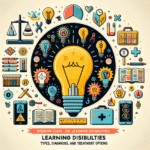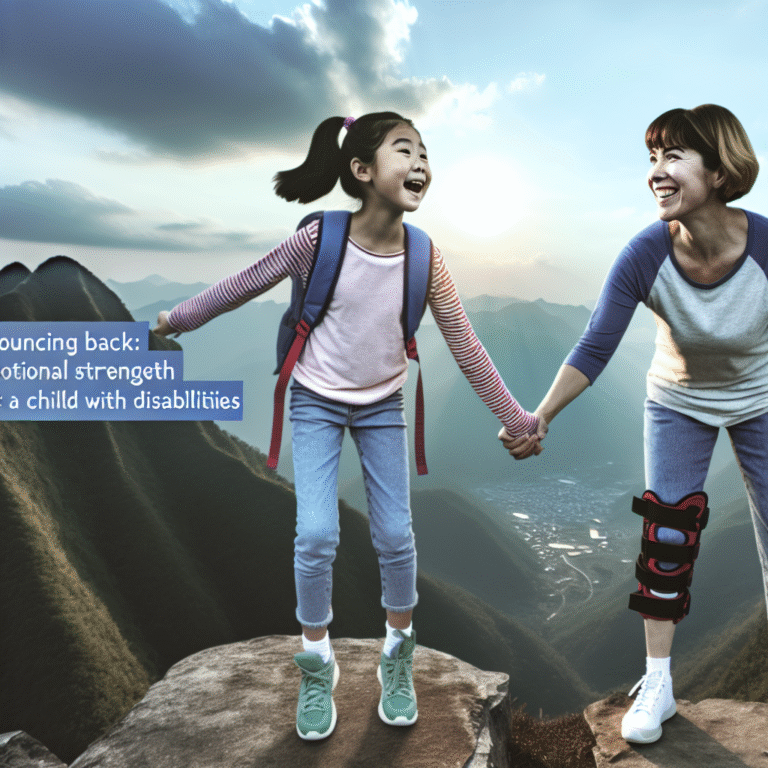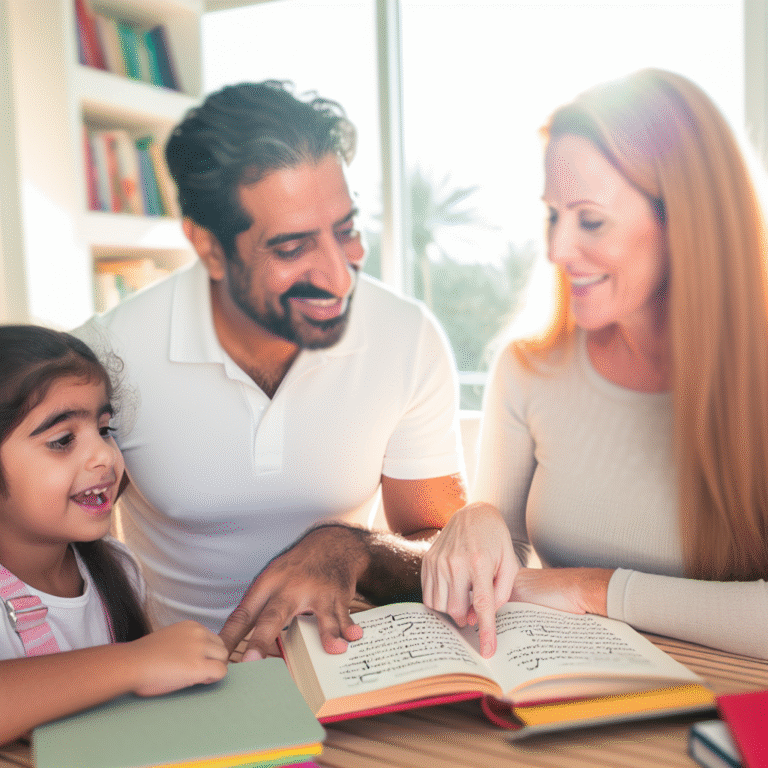From Struggle to Success: Personal Stories of Learning Disabilities and Technology Solutions
Introduction: Breaking Barriers
In an increasingly digital world, technology has transformed how we learn and communicate. For individuals with learning disabilities, this transformation can be a life-altering opportunity. The narrative of "From Struggle to Success" encapsulates the journey of those who have navigated the challenges posed by learning differences, harnessing technology not merely as a tool but as a lifeline. From assistive software to educational apps tailored for specific needs, technology offers solutions that can empower individuals, support educators, and reshape perceptions around learning disabilities. This article aims to delve deeper into this vital intersection of personal stories and technological advancements, showcasing how these elements foster resilience and success.
Understanding Learning Disabilities
What Are Learning Disabilities?
Learning disabilities (LD) encompass a wide array of neurological conditions that affect the way individuals process, understand, and communicate information. Common LDs include dyslexia, dyscalculia, and ADHD, each presenting its own unique challenges. As a society, we often view these challenges through a lens of negativity. However, shifting our focus to success stories highlights the potential those with learning differences possess when equipped with the right tools and support.
The Importance of Awareness and Understanding
Awareness surrounding learning disabilities is crucial in combating stigma and building inclusive environments. Understanding that these conditions are not indicative of intelligence but rather differences in processing information helps foster a supportive atmosphere both at home and in educational settings. Knowledge equips educators, parents, and peers to provide necessary accommodations that promote success.
The Role of Technology in Bridging Gaps
Technological Advancements
Technological solutions for learning disabilities have evolved exponentially. Tools such as text-to-speech software, organizational apps, and interactive learning programs can directly address the unique challenges faced by learners with LD. These technologies are not just supplemental; they can fundamentally change the learning experience, empowering individuals to harness their strengths and mitigate their weaknesses.
Case Study 1: Alex’s Journey with Dyslexia
Alex, a bright and creative student who struggled with dyslexia, faced significant challenges in a traditional classroom setting. Reading aloud was a daunting task, causing frustration and a decline in confidence. However, after being introduced to a text-to-speech application, Alex’s world transformed. The app allowed him to listen to the material while following along in the text, significantly improving his comprehension and retention. Through regular use of this technology, Alex not only started to excel academically but also regained his confidence. His story exemplifies the power of adaptive technology in providing the requisite support for students with dyslexia, making strides towards success.
Table 1: Rise in Reading Comprehension with Technology
| Type of Technology | Percent Improvement in Reading Comprehension |
|---|---|
| Text-to-Speech Software | 40% |
| Interactive Learning Apps | 35% |
| Audio Books | 30% |
| Note-Taking Apps | 25% |
Innovative Solutions for Various Learning Disabilities
1. Assistive Technology for Dyslexia
Dyslexia often requires tailored strategies. Tools like Ginger Software and Kurzweil provide spelling and grammar checks while offering reading assistance, making them invaluable for individuals with dyslexia. The aforementioned technologies allow learners to engage more fully with texts, enabling them to focus on content rather than being bogged down by written complexities.
2. Tools for ADHD Management
For individuals with ADHD, maintaining focus is crucial. Trello, a project management tool, helps students break down assignments into manageable tasks. Visual organizers enable students to see their workloads clearly, reducing feelings of being overwhelmed. Balancing workload and attention can notably improve performance.
3. Applied Solutions for Dyscalculia
Dyscalculia can hinder a student’s ability in mathematics. Digital calculators and apps like ModMath offer the ability to solve math problems step by step, enabling mastery of concepts that can typically be challenging. This technology helps to demystify mathematical processes and assists students in utilizing digital solutions to improve their numerical understanding.
Case Study 2: Jamie’s Mastery of Math with ModMath
Jamie, diagnosed with dyscalculia, often struggled with basic multiplication tables and arithmetic. After utilizing ModMath, an app designed for students with math-related challenges, Jamie saw significant improvements in his ability to perform complex calculations. The visual layout of the app allowed him to systematically tackle problems, breaking down each task for clarity. His experience highlights the importance of personalized learning tools in overcoming specific barriers associated with learning disabilities.
The Impact of Personal Stories
Building Community Through Shared Experiences
Stories of struggle and success resonate deeply, forming connections among individuals facing similar hurdles. These narratives not only inspire but also provide practical insights and strategies rooted in real-life experiences. Communities can foster support through shared stories, creating spaces where individuals can feel seen and validated.
Case Study 3: Maria’s Advocacy for Learning Disabilities
Maria, who navigated her educational journey with ADHD, became an advocate for younger students experiencing similar challenges. By sharing her story of “from struggle to success,” she helped establish an after-school program focusing on technology integration in learning environments. Maria’s advocacy led to tangible improvements in support systems within her school, creating a nurturing atmosphere for those with learning disabilities. This case illustrates the powerful ripple effect that personal stories can have on broader educational communities.
Strategies for Success
Learning to Leverage Technology
In the quest "From Struggle to Success: Personal Stories of Learning Disabilities and Technology Solutions," understanding how to effectively utilize technology is paramount. Here are several strategies to consider:
Trial and Assessment: Engage with different technologies to find which tools resonate best with individual learning styles. Schools and parents should support trial periods for various applications.
Continuous Training: Technology evolves rapidly. Continuous training for both learners and educators is essential to keep abreast of the latest tools and techniques available.
Holistic Support Systems: Implementing technology should correlate with comprehensive support strategies, including counseling and mentorship to enhance personal and academic growth.
- Feedback Loops: Encourage users to provide feedback on tools and strategies. This data helps developers create better solutions and reminds users they are part of an evolving learning journey.
Table 2: Effective Technological Strategies for Learning Disabilities
| Strategy | Description | Potential Impact |
|---|---|---|
| Customizable Learning Environments | Tailored learning spaces adapting to individual needs | Increases student engagement |
| Collaborative Tools | Software promoting teamwork and communication | Fosters social skills and collaboration |
| Gamified Learning Platforms | Learning through interactive and engaging games | Enhances motivation and retention |
Conclusion: Inspiring a New Perspective
The journey from struggle to success for those with learning disabilities can be both challenging and fulfilling. By embracing technology solutions, individuals unlock potential that transforms their educational experiences. Through personal stories, we see the embodiment of resilience, creativity, and the undeniable impact of adaptive learning tools.
As we move forward, it’s essential to cultivate environments that are inclusive and supportive, empowering students like Alex, Jamie, and Maria to not only overcome their struggles but to thrive. Let us all champion the integration of technology and a shared understanding of learning disabilities, inspiring a brighter future for every learner.
FAQs
1. What are the most common learning disabilities?
Learning disabilities commonly include dyslexia, dyscalculia, ADHD, and processing disorders. Each impacts learning differently, necessitating distinct strategies and supports.
2. How can technology support students with learning disabilities?
Technology offers various solutions, including text-to-speech software, organizational apps, and engaging educational platforms, allowing individuals to better manage their learning experience.
3. Are there legal protections for students with learning disabilities?
Yes, laws such as the Individuals with Disabilities Education Act (IDEA) and Section 504 of the Rehabilitation Act protect the rights of students with learning disabilities, ensuring they receive appropriate accommodations and services.
4. How can parents advocate for their child’s learning needs?
Parents can advocate by actively engaging in their child’s educational journey, collaborating with teachers, exploring available resources, and communicating openly about their child’s unique needs.
5. What steps can be taken to foster a more inclusive educational environment?
To foster inclusivity, schools can provide professional development for educators, implement individualized education plans (IEPs), and incorporate technology that meets diverse learning needs.
By sharing inspiring stories and actionable insights, we can redefine the narrative surrounding learning disabilities, paving the way for genuine empowerment and success. "From Struggle to Success: Personal Stories of Learning Disabilities and Technology Solutions" is a testament to the remarkable journeys being undertaken every day.









